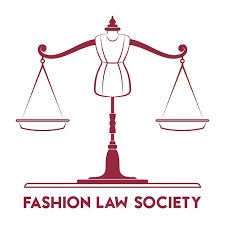Trademark Opposition Under New Trademark Rule, 2017
What is a Trademark (TM) Opposition?
A Trademark Opposition is an administrative proceeding before the Registrar of the trademark, wherein one party seeks to prevent another from registering a trademark. India has a trademark law based on common law principles. Indian trademark law is developed and provided with enough checks and securities to maintain the uniqueness of the marks registered in the registry and to protect the creator's rights from getting infringed. The Trademark Act of 1999 provides for three-tier security for the trademark registration. Firstly, in the registration office itself where the official checks the mark and asses its uniqueness and only approve if he doesn't find a similar one already registered in the existing database of the registry.Secondly, if by any chance he fails to check it properly and allow it to be registered, the mark first will be published in the Trade Marks Journal, published from time to time, normally on a weekly basis, and can be viewed by all at www.ipindia.nic.in/journal-to.html., the official website of the Registrar of Trademarks. After the publication of such marks, one can file an opposition against subject trademark, stating their objections, as provided under Section 21 of The Trademark Act 1999. A time limit of three months is allowed for initiating trademark opposition proceeding after it appears on the journal for the first time; however that can be extended to a maximum of four months whatsoever. once opposed the trademark application status will reflect as 'Opposed' and Registrar will be open to take evidence as well as hear the party's contentions to decide further.
Thirdly, once the trademark appears on the journal and it remains unopposed for four months then it gets registered and after that one can only initiate the rectification proceeding to cancel or vary the registration.
Who Can Initiate Trademark Opposition Proceeding In India?
Section 21 of the Trademarks Act, 1999 states that 'any person' can file the notice of opposition, that includes any natural or legal person like companies, partnership firms etc. Trademark opposition filing can be filed by an Indian or foreign customer, member of the public or competitor or any other person. In fact, if two or more persons have the same issues against a trademark, they can be joined together as opponents.However, generally the following persons file a trademark opposition:
a. Already Registered-The owner of an earlier trademark application or registration covering a similar Trademark for similar goods.
b. Prior User- A person who has used the same or a similar trademark prior to the client, but who haven't registered his trademark.
What are the different grounds for initiating a Trademark Opposition proceeding in India?
The grounds and reasons available for filing a TM Opposition in India will depend on the facts and circumstances of each and every case. However, some of the basic grounds for opposing a trademark provided under the trademark act of 1999 are as follows:
1. The trademark is similar or identical to an earlier or existing registered trademark.
2. The mark is not of distinctive character.
3. Application for the trademark is made with bad faith.
4. The mark is descriptive in nature.
5. The trademark is likely to deceive the public or cause confusion.
6. The mark contains matters that are likely to hurt religious feelings of any class or section of people.
7. The trademark is prohibited under the Emblem and Names Act, 1950
8. The mark is contrary to the law or is prevented by law
What Is The Procedure of Filing Trademark Opposition In India?
The following stages are involved in the Trademark Opposition filing procedure:
# Notice of Opposition: Any person can file a notice of opposition on a trademark that appears on trademark journal within 4 months from the date of the first appearance. The opposition will be filled in the FORM TM -O, fees for filing the same is around three thousand. Initially
, There were 74 different forms available for every different process, which has been amended in trademark rules in 2017, currently there are just 8 exhaustive forms covering every concerning thing. The notice of opposition has to be filed and contested at the same office or branch where the original application for trademark registration has been filed by the Applicant. The Head office of the Trade Marks Registry is at Mumbai and branch offices are at Ahmadabad, Chennai, Delhi, and Kolkata.
# Counter Statement: Rule 44of The Trademark Rules, 2017, states that after the filing of the notice of opposition, the Applicant for the registration of subject mark, can file a counter statement, in Form TM-O, within 2 months (not extendable) of the receipt of the notice of opposition. on failure of filing the counter-statement the application for registration deemed to be abandoned or deserted by the applicant and the Registrar will take it down from the journal and will not approve it for the registers.
Applicant can also file the same on the basis of Electronic copy of notice made available on website of Trademarks Registry.
# Producing Evidence in trademark opposition
1.Evidence in Support of Opposition: Rule 45 ofThe Trademark Rules, 2017,states that the opposing party has to produce evidence to support its objection within 2 months (extendable by one month) of receiving the copy of the counter-statement filed by the applicant. The party also has the option of refraining from producing any evidence and relying solely on the opposition notice.
2.Evidence in Support of Application: after the opposing party files evidence in support of his objections, the applicant is also allowed a time of two months to produce evidence in his favor. He also has an option of not providing any evidence and to rely only on the counter statement as provided in Rule 46,The Trademark Rules, 2017.
3.Evidence in reply: Under Rule 47,The Trademark Rules, 2017, the Opponent is given one additional month (extendable by 1 month) to file Evidence in response to the Applicant's evidence.
once this phase is over parties are not allowed to adduce any further evidence. However, the Registrar can exercise his discretion to ask for more evidence subject to cost and terms. An interlocutory application needs to be filled by the concerned party for this.
# Hearing: After the evidence filing stage is over the Registrar shall give the notice to the parties stating the date of hearing, which shall be at least one month after the date of the first notice. Hearing is based on the notice of opposition, counter-statement, and evidence filed. The parties are required to notify the Registrar about their intention to appear for the hearing. There's an option of adjourning the hearing also, and the request for it can be made under FORM TM –M,at least 3 days prior to the hearing, however one is allowed a maximum of two times only to request for an adjournment. Finally, the matter is heard by the Registrar and decided upon merits. If any of the party doesn't show up for the hearing the Registrar will rule against his favor.
# If Appeal: The Registrar shall upon hearing both the parties and reviewing the evidence submitted decides whether the opposition succeeds at establishing their objection or failed to do so, and in turn determines whether the trademark shall be registered or not thereby bringing the opposition proceeding to a conclusion. However, the party aggrieved by the Registrar's decision may challenge the same by filing an appeal before the Intellectual Property Appellate Board.
Now in this already cumbersome process, the security checks provided in the acts become the reason for further delaying of the trademark registration which takes a minimum of 2 years to complete. once the mark is opposed it is imperative for the applicant to reply vehemently and to prepare his defense in order, it is also advisable to take experts help in the process of registering a trademark, that will help by eliminating all the chances of getting objected or rectified, and an unopposed registration is the best way out there to get the registration done easily and in time.
Law Article in India
Legal Question & Answers
Lawyers in India - Search By City
LawArticles
How To File For Mutual Divorce In Delhi

How To File For Mutual Divorce In Delhi Mutual Consent Divorce is the Simplest Way to Obtain a D...
Increased Age For Girls Marriage

It is hoped that the Prohibition of Child Marriage (Amendment) Bill, 2021, which intends to inc...
Facade of Social Media

One may very easily get absorbed in the lives of others as one scrolls through a Facebook news ...
Section 482 CrPc - Quashing Of FIR: Guid...

The Inherent power under Section 482 in The Code Of Criminal Procedure, 1973 (37th Chapter of t...
The Uniform Civil Code (UCC) in India: A...

The Uniform Civil Code (UCC) is a concept that proposes the unification of personal laws across...
Role Of Artificial Intelligence In Legal...

Artificial intelligence (AI) is revolutionizing various sectors of the economy, and the legal i...








Please Drop Your Comments